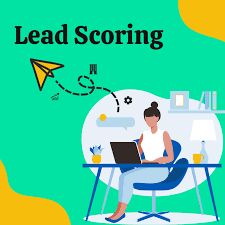Introduction to Assign leads based on scoring : Optimizing Lead Management in the Digital Age
In today’s competitive business landscape, efficient lead management is crucial for sales and marketing success. Identifying and prioritizing the most promising leads is essential for maximizing resources and converting qualified prospects into loyal customers. This is where lead scoring comes into play.
Understanding Lead Scoring in Sales and Marketing:
Lead scoring is a systematic approach to assigning numerical values to individual leads based on their characteristics, behaviors, and interactions with your brand. These characteristics can include:
- Demographic information: Age, location, job title, etc.
- Website activity: Pages visited, time spent on specific pages, downloads made, etc.
- Marketing engagement: Email opens, click-through rates, webinar registrations, etc.
- Social media interactions: Following your brand, sharing your content, commenting on posts, etc.
By assigning scores to these various data points, lead scoring helps you:
- Rank leads based on their potential value and likelihood to convert, allowing you to prioritize your sales and marketing efforts.
- Identify the most qualified leads who are ready for nurturing and sales outreach, optimizing your resources and increasing efficiency.
- Automate lead nurturing and communication based on their score, ensuring timely and personalized engagement with potential customers.
Importance of Lead Scoring for Efficient Lead Management:
Lead scoring offers numerous benefits for businesses, including:
- Improved lead qualification: By focusing on high-scoring leads, sales teams can avoid wasting time on unqualified prospects, leading to increased efficiency and productivity.
- Enhanced sales and marketing alignment: Lead scoring provides a shared understanding of lead quality between sales and marketing teams, fostering better collaboration and optimizing resource allocation.
- Personalized marketing and sales outreach: By tailoring communication based on individual lead scores, businesses can deliver more relevant and engaging content, improving conversion rates and customer satisfaction.
- Data-driven decision making: Lead scoring provides valuable data and insights that can inform marketing and sales strategies, allowing for data-driven decision making and continuous improvement.
In today’s digital age, where businesses generate a vast amount of lead data, lead scoring acts as a powerful tool to make sense of this information and transform it into actionable insights.
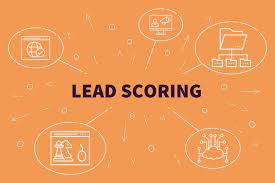
Evolution of Lead Scoring Techniques Over Time:
Lead scoring techniques have evolved significantly over time, with advancements in technology and data analysis paving the way for more sophisticated and personalized approaches. Here’s a brief overview of the evolution:
- Early lead scoring: Primarily relied on explicit data points like demographics and firmographics (company size, industry), offering a limited view of lead quality.
- Behavioral lead scoring: Introduced the analysis of website and marketing engagement, providing a more holistic understanding of lead behavior and intent.
- Predictive lead scoring: Leverages machine learning and artificial intelligence (AI) to analyze vast datasets and predict the likelihood of conversion with greater accuracy.
As technology continues to evolve, lead scoring is expected to become even more sophisticated, incorporating advanced analytics, AI, and real-time data to further refine lead qualification and personalize the customer journey.
By understanding the fundamentals of lead scoring, its significance in lead management, and its evolving landscape, businesses can effectively leverage this powerful tool to optimize their sales and marketing efforts, maximize lead generation, and ultimately achieve sustainable business growth.
The Basics of Lead Scoring: Building a Framework for Effective Lead Qualification
Building a successful lead scoring model requires a structured and well-defined approach. This section delves into the essential components of defining lead scoring criteria, identifying key attributes, and establishing scoring thresholds and ranges.
Defining Lead Scoring Criteria:
Lead scoring criteria are the specific factors or data points you use to evaluate and assign scores to your leads. These criteria should be aligned with your ideal customer profile (ICP) and reflect the characteristics and behaviors of your most valuable leads.
Here are some key considerations when defining your lead scoring criteria:
- Relevance: Ensure the criteria are relevant to your business goals and contribute to lead qualification. Avoid including irrelevant information that doesn’t add value to assessing a lead’s potential.
- Measurability: Choose criteria that can be quantified and assigned numerical values. This allows for objective scoring and consistent evaluation across leads.
- Actionable insights: The chosen criteria should provide actionable insights for sales and marketing teams, enabling them to prioritize leads and tailor their communication strategies.
Common examples of lead scoring criteria include:
- Demographic information: Age, location, job title, industry, company size, etc.
- Website activity: Pages visited, time spent on specific pages, downloads made, form submissions, etc.
- Marketing engagement: Email opens, click-through rates, webinar registrations, social media interactions, etc.
- Sales engagement: Previous interactions with sales representatives, inquiries made, etc.
Identifying and Weighting Key Lead Attributes:
Once you’ve defined your lead scoring criteria, it’s crucial to identify the most important attributes that contribute most significantly to lead qualification. This process involves weighting each attribute based on its relative importance to your business goals and ideal customer profile.
Here are some key steps for identifying and weighting key lead attributes:
- Brainstorm and prioritize: List all the potential scoring criteria and discuss their importance with relevant stakeholders from sales, marketing, and other departments.
- Assign weights: Assign numerical weights to each attribute, reflecting its relative significance in determining lead quality. Higher weights indicate greater importance.
- Review and refine: Regularly review and refine your attribute weights based on data analysis and performance insights.
Factors to consider when weighting attributes:
- Impact on conversion: How strongly does each attribute correlate with the likelihood of a lead converting into a customer?
- Data availability: Can you easily access and measure all the chosen attributes through your marketing automation platform or CRM system?
- Alignment with ICP: How well does each attribute reflect the characteristics of your ideal customer profile?
Establishing Scoring Thresholds and Ranges:
Scoring thresholds and ranges define the numerical boundaries that determine how leads are categorized based on their total scores. These thresholds differentiate between low-quality, mid-tier, and high-quality leads, allowing you to prioritize your outreach and nurturing efforts.
Here’s how to establish effective scoring thresholds and ranges:
- Define lead segments: Determine the different categories or segments you want to classify your leads into, such as “Needs nurturing,” “Marketing qualified lead (MQL),” and “Sales qualified lead (SQL).”
- Assign threshold ranges: Assign specific score ranges to each lead segment. For example, leads with scores between 0-50 might be categorized as “Needs nurturing,” while those with scores above 80 might be considered “Sales qualified leads.”
- Set realistic thresholds: Ensure your thresholds are realistic and achievable, considering the average score distribution of your leads and your overall marketing and sales goals.
Establishing clear scoring thresholds and ranges provides a structured framework for evaluating leads and ensures consistent lead classification across your marketing and sales teams.
By following these guidelines and considering the specific needs of your business, you can define effective lead scoring criteria, identify and weight key attributes, and establish scoring thresholds and ranges to build a robust foundation for your lead scoring model. Remember, regularly review and refine your approach based on data analysis and performance insights to continuously improve the effectiveness of your lead scoring strategy.
Methods and Models for Lead Scoring: Choosing the Right Approach for Your Business
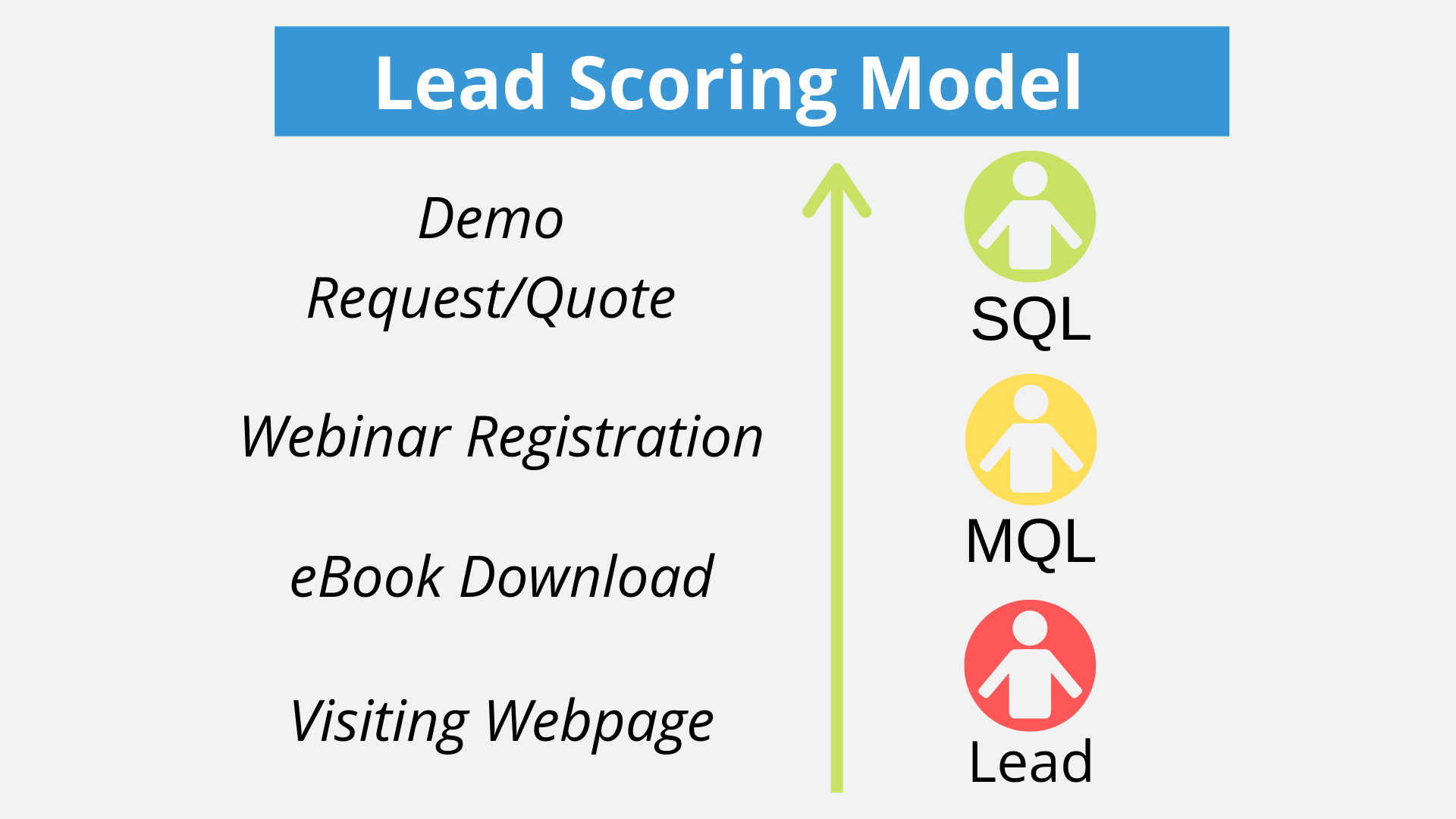
Having established the fundamentals of lead scoring criteria, attributes, and thresholds, it’s crucial to understand the various methods and models available for implementing your lead scoring strategy. This section explores three common approaches: traditional models, predictive models using machine learning, and behavior-based techniques.
Traditional Lead Scoring Models:
Traditional lead scoring models are based on predefined rules and point systems. These models are relatively simple to implement and can be effective for businesses with established lead qualification criteria and limited data complexity.
Here are two common types of traditional models:
- Rule-based scoring: Assigns points based on predefined rules about specific lead attributes. For example, a lead might receive 5 points for visiting a product page and 10 points for downloading a white paper.
- Point-based systems: Assign individual point values to each relevant attribute, allowing for more flexibility in scoring. This method requires careful consideration of the relative importance of each attribute.
Benefits of traditional models:
- Simple to implement and understand: Easy to set up and manage, requiring less technical expertise.
- Transparent and easy to explain: Straightforward logic behind the scoring system, making it easier for stakeholders to understand.
Limitations of traditional models:
- Less accurate for complex data: May not be as effective for handling large datasets or complex lead behavior patterns.
- Limited adaptability: Reliant on predefined rules, making it challenging to adapt to evolving customer behavior and market trends.
Predictive Lead Scoring Using Machine Learning:
Predictive lead scoring models leverage machine learning algorithms to analyze vast datasets and identify patterns that correlate with lead conversion. These models offer greater accuracy and personalization compared to traditional methods.
Here’s how machine learning is used in lead scoring:
- Data collection and preparation: Large datasets are gathered from various sources, including website behavior, marketing engagement, and CRM data.
- Model training and validation: Machine learning algorithms are trained on historical data to identify patterns and relationships between lead attributes and conversion probability.
- Lead scoring and prediction: The trained model is used to score new leads based on their individual attributes, predicting their likelihood of conversion.
Benefits of predictive models:
- Increased accuracy and personalization: Machine learning models can analyze complex data and identify subtle patterns, leading to more accurate lead scoring and personalized outreach strategies.
- Adaptability and continuous improvement: These models can adapt to changing customer behavior and market trends over time, improving their accuracy through continuous learning.
Limitations of predictive models:
- Complexity and technical expertise: Requires more technical expertise to implement and maintain compared to traditional models.
- Data dependency: Reliant on large amounts of high-quality data for effective training and performance.
Behavior-Based Lead Scoring Techniques:
Behavior-based lead scoring focuses on analyzing a lead’s specific interactions with your brand to assess their level of engagement and purchase intent. This approach provides valuable insights into a lead’s activeness and interest in your offerings.
Here are some common behavior-based scoring techniques:
- Website activity tracking: Analyze website visits, page views, time spent on specific pages, and downloads to understand a lead’s browsing behavior and content engagement.
- Email engagement scoring: Track email opens, click-through rates, and link clicks within emails to gauge a lead’s interest in your marketing communications.
- Social media engagement: Monitor social media interactions, such as likes, shares, and comments, to assess a lead’s brand awareness and level of advocacy.
Benefits of behavior-based techniques:
- Real-time insights: Provides up-to-date information on lead behavior, allowing for immediate engagement and nurturing efforts.
- Focus on active engagement: Identifies leads who are actively engaging with your brand, indicating a higher potential for conversion.
Limitations of behavior-based techniques:
- Limited scope: May not capture all aspects of a lead’s profile and purchase intent, requiring integration with other scoring methods for a holistic view.
- Data privacy considerations: Implementing these techniques requires careful attention to data privacy regulations and user consent.
Choosing the right lead scoring method depends on your business needs, data availability, technical expertise, and budget. Consider the complexity of your lead data, desired level of accuracy, and resources available when selecting the most suitable approach for your organization.
Implementing Lead Scoring in Your Sales Process: Transforming Lead Management
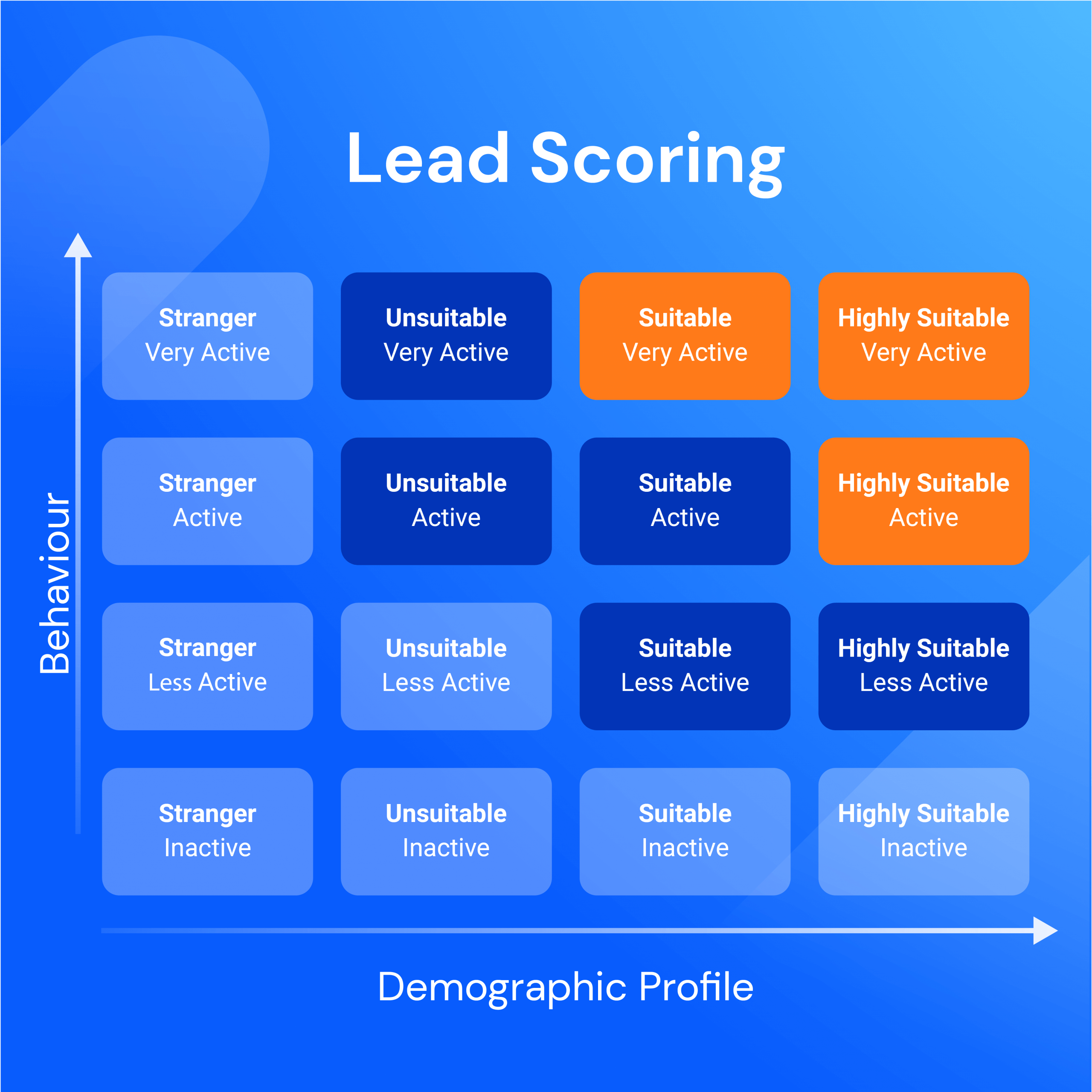
Once you’ve chosen your lead scoring model, it’s time to integrate it seamlessly into your sales process to optimize lead management and maximize efficiency. This section explores key steps for implementing lead scoring, including framework development, CRM integration, and sales team training.
Developing a Lead Scoring Framework:
- Define your goals: Clearly outline the objectives of your lead scoring implementation, such as improving lead qualification, optimizing resource allocation, or increasing conversion rates.
- Customize your approach: Tailor your lead scoring criteria, weights, and thresholds to your specific business needs and target audience.
- Ensure scalability: Design your framework to accommodate future growth and potential changes in your marketing and sales strategies.
Integrating Lead Scoring with CRM Systems:
- Establish seamless integration: Connect your lead scoring system with your CRM platform to ensure data synchronization. This allows for automatic lead scoring updates and real-time access to lead information for sales teams.
- Automate lead nurturing based on score: Set up automated email workflows or triggers based on lead score ranges to nurture leads effectively and personalize communication.
- Utilize scoring insights for lead segmentation: Segment your leads within your CRM based on their scores to prioritize outreach and tailor communication strategies for different segments.
Training Sales Teams for Effective Lead Management:
- Train your sales team: Provide comprehensive training on understanding lead scoring, interpreting lead scores, and utilizing them for effective lead prioritization.
- Emphasize the importance of lead nurturing: Train your team on engaging with mid-tier leads (those with moderate scores) through personalized nurturing efforts to improve conversion rates.
- Foster collaboration: Encourage open communication and collaboration between sales and marketing teams to ensure alignment on lead scoring and lead management strategies.
By implementing these steps, you can effectively integrate lead scoring into your sales process, empowering your team to prioritize leads effectively, personalize communication, and ultimately drive sales growth. Remember, continuous monitoring and refinement of your lead scoring model based on data and performance insights are crucial for maintaining its effectiveness and ensuring its ongoing alignment with your evolving business goals.
Best Practices for Lead Scoring Success: Optimizing Your Implementation for Long-Term Growth
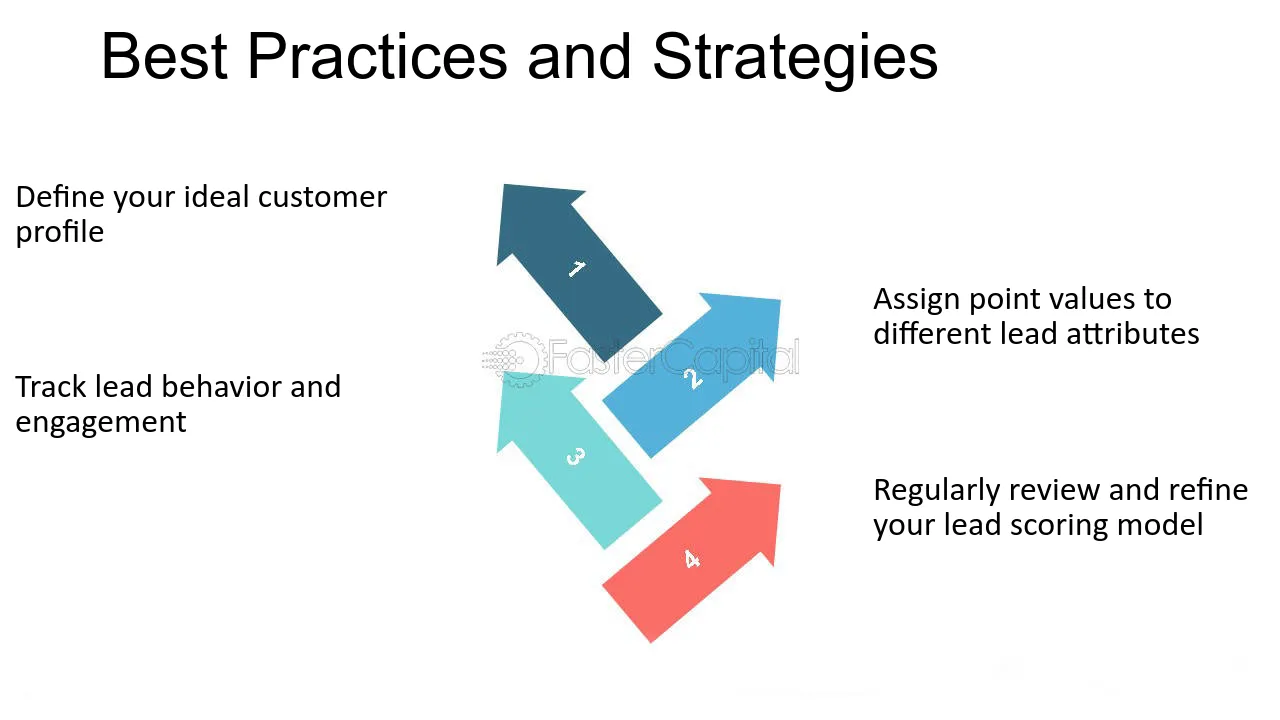
Lead scoring is not a one-time implementation. To maximize its effectiveness and contribute to long-term sales and marketing success, here are some key best practices to consider:
Regularly Reviewing and Refining Scoring Models:
- Schedule periodic reviews: Regularly assess the performance of your lead scoring model by analyzing conversion rates, lead engagement metrics, and sales team feedback.
- Refine based on data: Identify areas for improvement based on data insights. This might involve adjusting scoring criteria, weights, or thresholds to ensure your model remains accurate and aligned with your evolving business needs.
- Embrace continuous improvement: View lead scoring as an ongoing process and adapt your model as necessary to maintain its effectiveness and optimize your lead management strategies.
Aligning Sales and Marketing Efforts:
- Foster open communication: Establish clear communication channels between sales and marketing teams to ensure a shared understanding of lead scoring methodology, lead quality expectations, and communication protocols.
- Align lead nurturing strategies: Collaborate on developing targeted nurturing campaigns for different lead segments based on their scores, ensuring consistency and effectiveness throughout the customer journey.
- Set joint goals: Establish shared goals for lead conversion based on lead scoring insights, fostering a collaborative environment and driving collective accountability for success.
Analyzing and Leveraging Lead Scoring Data:
- Track key metrics: Monitor relevant metrics such as lead conversion rates, sales cycle length, and customer lifetime value to understand the impact of lead scoring on your sales process.
- Identify trends and patterns: Analyze lead scoring data to identify trends and patterns that can inform marketing and sales strategies, such as optimizing campaign targeting or refining content creation for specific lead segments.
- Data-driven decision making: Utilize insights from lead scoring data to make informed decisions about resource allocation, marketing campaign optimization, and lead nurturing strategies, ultimately driving data-driven growth for your business.
By following these best practices, you can ensure your lead scoring implementation is continuously optimized, aligned with your overall sales and marketing strategy, and leverages data effectively to drive long-term success and sustainable growth.
Challenges and Solutions in Lead Scoring: Overcoming Obstacles for Optimal Implementation
While lead scoring offers numerous benefits, implementing it effectively requires navigating potential challenges. This section explores three common hurdles and presents solutions to ensure a successful and optimized lead scoring strategy:

Addressing Data Quality Issues:
Challenge:
Inaccurate or incomplete data can lead to unreliable lead scores and hinder the effectiveness of your lead scoring model.
Solution:
- Data cleansing: Regularly clean and deduplicate your data to eliminate errors, inconsistencies, and outdated information.
- Data validation: Implement processes to validate the accuracy of incoming data at the point of entry, minimizing errors from the outset.
- Data enrichment: Enrich your data with additional information from third-party sources to gain a more comprehensive understanding of your leads.
Overcoming Resistance to Automated Scoring:
Challenge:
Sales teams might resist adopting lead scoring due to perceived loss of control or concerns about the accuracy of automated scoring.
Solution:
- Change management: Implement a clear change management strategy to address concerns, highlight the benefits of lead scoring, and involve sales teams in the setup and refinement process.
- Transparency and communication: Provide transparent communication about how lead scoring works and how it will be used.
- Training and empowerment: Offer comprehensive training to sales teams on interpreting lead scores and using them to prioritize outreach and engage with leads effectively.
Dealing with Subjectivity in Scoring Criteria:
Challenge:
Assigning weights to scoring criteria can involve some subjectivity, which might introduce bias into the model and affect its accuracy.
Solution:
- Standardization: Develop clear and standardized guidelines for evaluating lead attributes to minimize subjective interpretation.
- Data-driven approach: Base scoring criteria and weights on data analysis and insights from past performance, rather than solely on individual opinions.
- Regular review and refinement: Regularly review your scoring criteria and weights based on performance data to identify and address any potential biases.
By recognizing these challenges and implementing appropriate solutions, you can overcome potential hurdles and ensure your lead scoring model delivers accurate, reliable insights that empower your sales and marketing teams to optimize lead management and maximize their success. Remember, continuous monitoring, adaptation, and collaboration are key to maintaining an effective lead scoring strategy that drives long-term growth for your business.
Future Trends in Lead Scoring: Shaping the Landscape of Lead Management
The future of lead scoring is evolving rapidly, driven by advancements in technology and changing customer expectations. Here are two key trends that are poised to significantly impact the way businesses approach lead scoring:
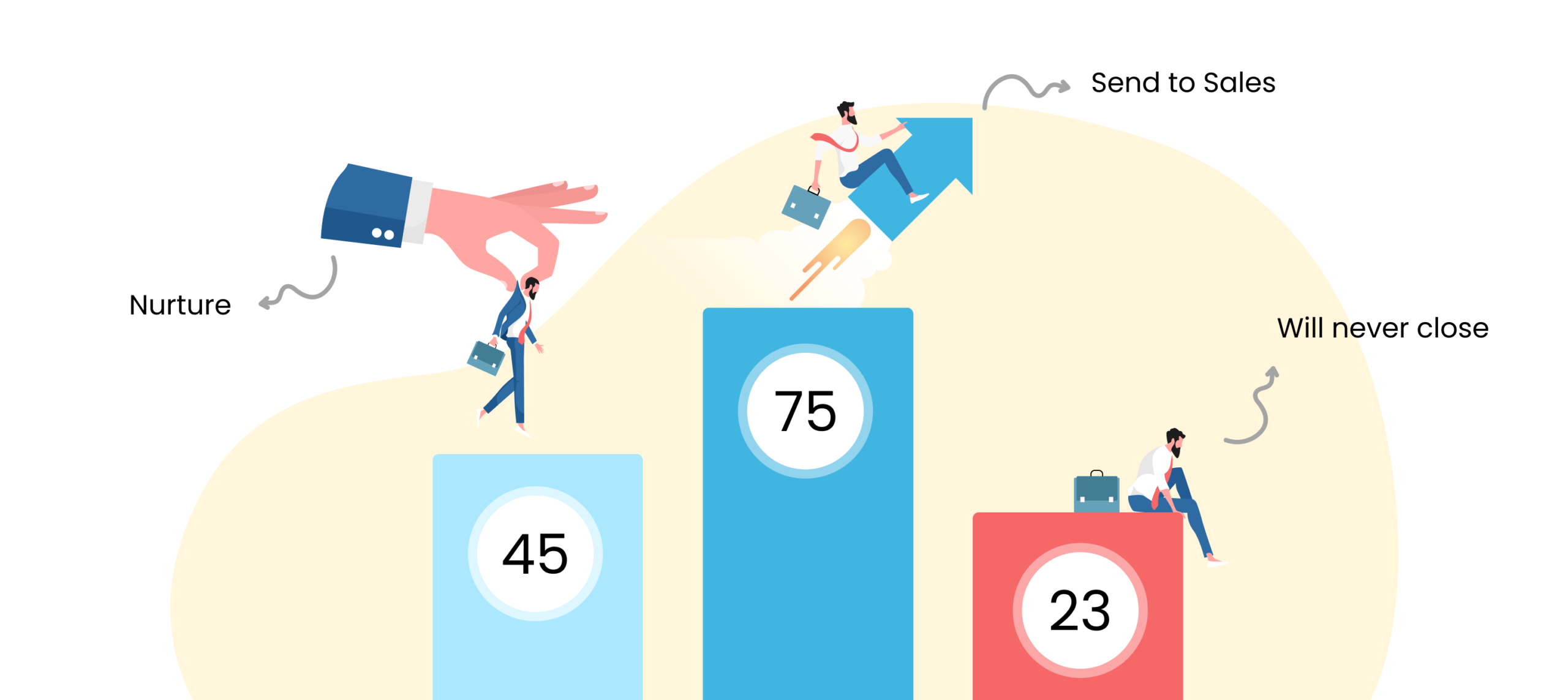
Integration of AI and Predictive Analytics:
- Advanced machine learning algorithms: Leveraging the power of artificial intelligence (AI) and advanced machine learning algorithms to analyze vast amounts of data and identify complex patterns that predict lead behavior and conversion probability with greater accuracy.
- Real-time lead scoring: Enabling dynamic lead scoring that adjusts in real-time based on a lead’s ongoing behavior and interactions, providing an even more precise assessment of their conversion potential.
- Predictive lead nurturing: Utilizing AI to personalize lead nurturing campaigns based on predicted future behavior, ensuring timely and relevant communication that resonates with individual leads.
Enhanced Personalization and Customization:
- Beyond demographics and firmographics: Moving beyond traditional lead scoring criteria to incorporate psychographic and behavioral data to create a more holistic understanding of individual leads’ preferences and needs.
- Dynamic content and communication: Generating dynamic website content and personalized communication based on individual lead scores, offering tailored experiences that are more engaging and relevant to their specific interests.
- Omnichannel scoring and engagement: Integrating lead scoring data across all touchpoints, such as social media, email, and website interactions, to provide a comprehensive view of lead behavior and enable consistent, personalized engagement across all channels.
By embracing these future trends, businesses can unlock the full potential of lead scoring to achieve a deeper understanding of their target audience, personalize the customer journey, and ultimately drive sustainable growth. As the field of lead scoring continues to evolve, embracing innovation and adapting to changing trends will be crucial for businesses to stay ahead of the curve and maximize their lead generation and conversion success.
Conclusion: Optimizing Sales Performance through Effective Lead Scoring
In conclusion, effective lead scoring is a pivotal strategy for optimizing sales performance in today’s dynamic business landscape. By systematically evaluating and prioritizing leads based on defined criteria, businesses can streamline their sales processes, boost team productivity, and enhance overall efficiency. The ability to harness the power of lead scoring models, whether traditional or powered by advanced technologies like machine learning, empowers organizations to focus their resources on high-potential opportunities.
As businesses navigate the evolving sales environment, it is crucial to continually review and refine lead scoring models, ensuring they align with changing market dynamics and customer behaviors. The integration of AI and predictive analytics offers a glimpse into the future, promising even more personalized and data-driven approaches to lead scoring. By overcoming challenges related to data quality, automation resistance, and subjectivity, businesses can unlock the full potential of lead scoring and foster stronger collaboration between sales and marketing teams.
In essence, the journey to assign leads based on scoring involves a commitment to ongoing improvement, strategic alignment, and embracing emerging technologies. As businesses adapt to these trends and best practices, they position themselves for sustained success, driving revenue growth and building lasting customer relationships. Lead scoring stands as a cornerstone in the modern sales toolkit, providing a pathway to not only meet but exceed customer expectations in an ever-evolving marketplace.



